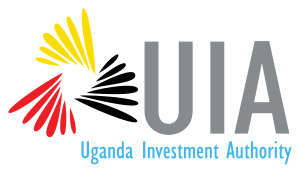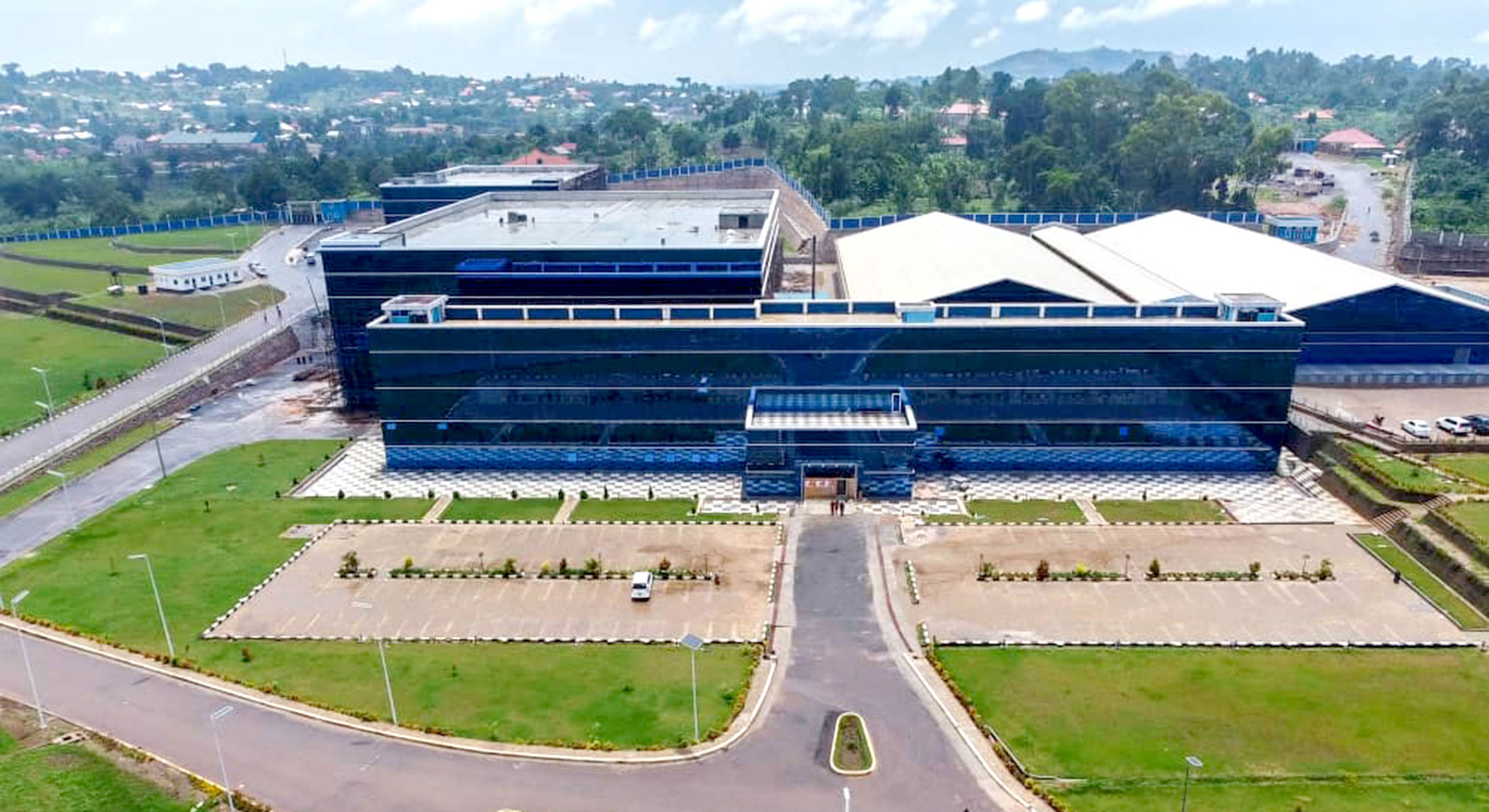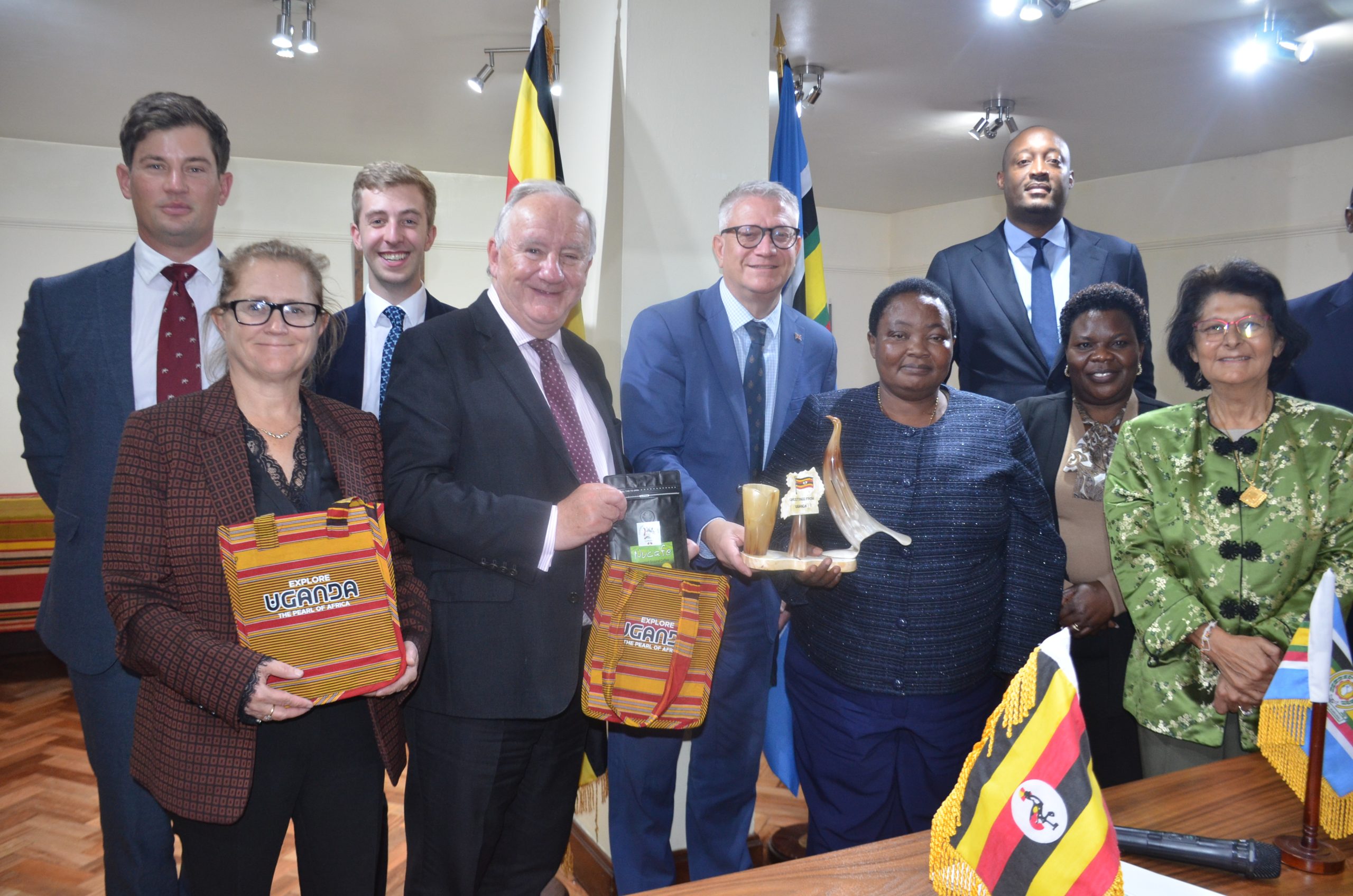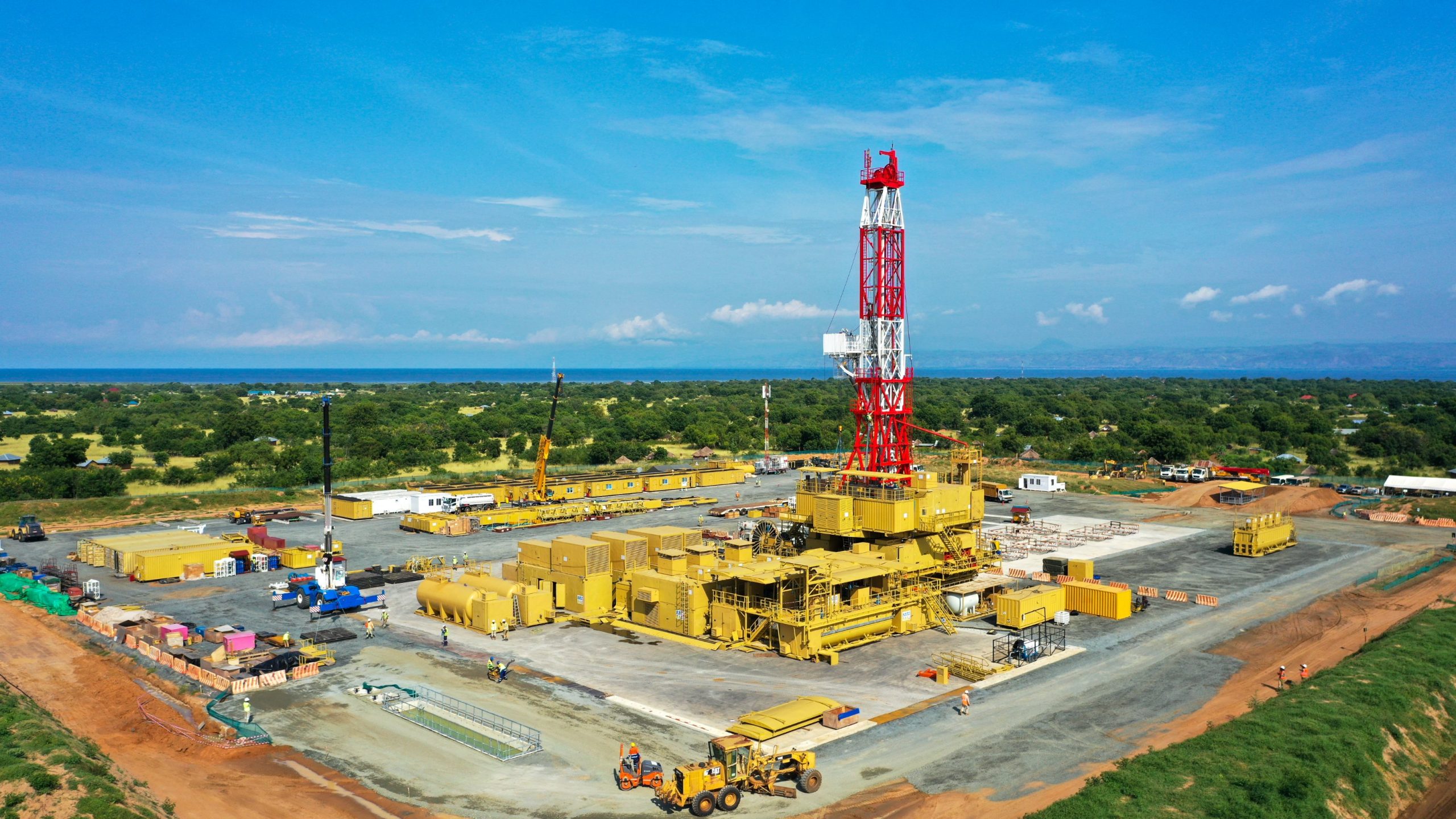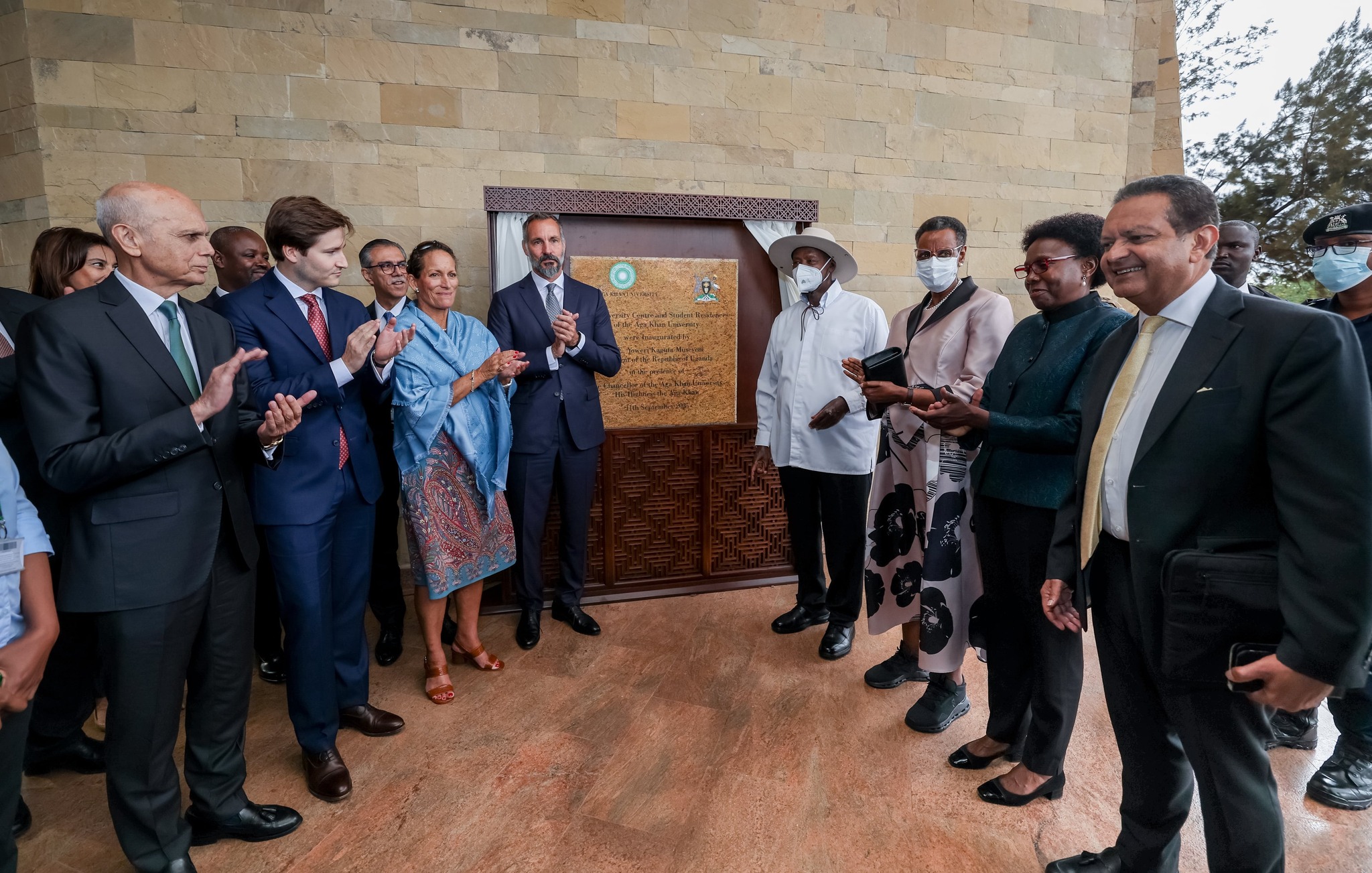The Uganda Investment Authority (UIA) is the chief investment promotion agency of the Government of Uganda. It was created by the Investment Code of 1991, amended in 2019.
When UIA was created in 1991, it was a structural economic adjustment time when the government was divesting itself of state holdings and private sector investment was low
UIA’s mandate is to initiate and support measures that enhance investment in Uganda and advise the Government on appropriate policies conducive for investment promotion.
The vision of UIA is “A globally competitive Uganda, profitable for business and investment”, while its mission is “To promote, attract, and retain value-adding domestic and foreign investments through robust marketing and investor-centric policies and services”.
UIA plays four critical roles in promoting investment in Uganda:
- Promoting and marketing investment opportunities by identifying and promoting strategic investment opportunities in Uganda to attract foreign and domestic investments;
- Investment facilitation by offering business development support, investor licensing, matching with government agencies, aftercare services, resolution of investor issues, diversification support, and enabling business linkages;
- Improving the investment and business environment by offering one-stop services like licensing and permits that help ease doing business; and
- Industrial park development by establishing serviced industrial parks across the country.
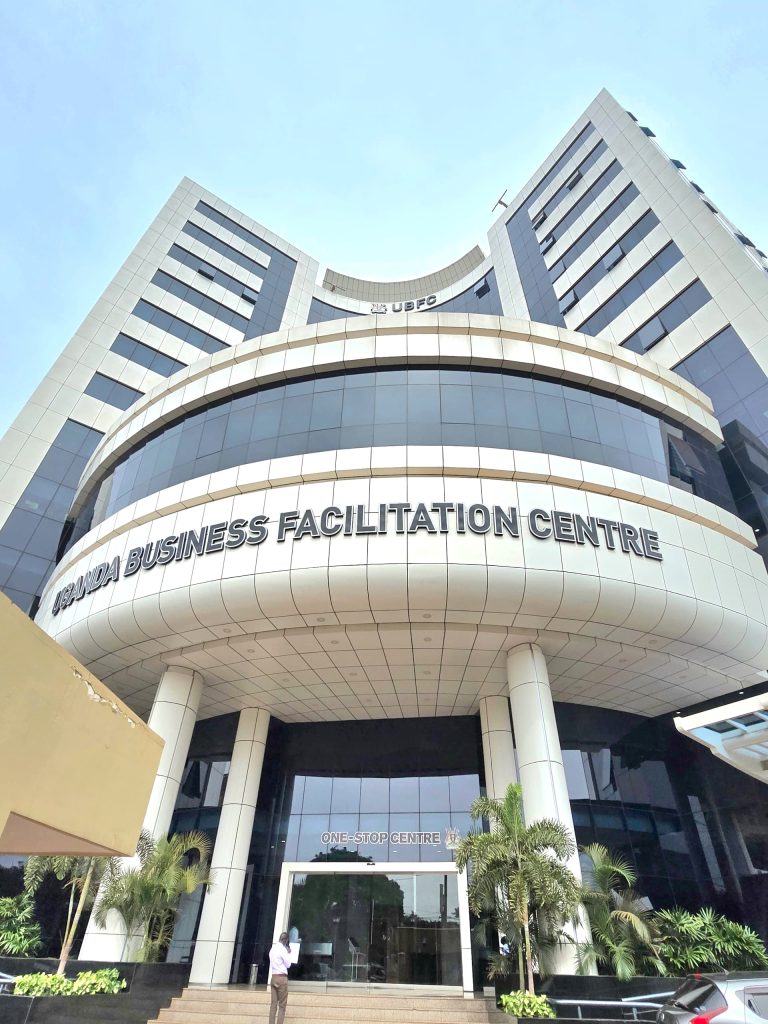
Great strides made
That Uganda’s investment terrain has grown and expanded by leaps and bounds is not in question. It is important to appreciate that the very first investor (domestic or international) was Mukwano Enterprises, now a conglomerate.
The success story of now Mukwano Group cannot be told without the contribution of UIA, which lately also allocated it acres of land for its sprawling factory in Namanve Industrial Park. In Uganda, there are so many investor success stories of which UIA is a part and an unsung hero.
Licensing investors
On average, UIA licenses over 380 new investment projects annually, above its annual target of 300. This has been the trend in the last decade (see table below).
Number of licensed investment from FY2012/13 to FY2023/24
| Year | Licensed investment projects |
| 2012/13 | 347 |
| 2013/14 | 440 |
| 2014/15 | 412 |
| 2015/16 | 345 |
| 2016/17 | 439 |
| 2017/18 | 347 |
| 2018/19 | 264 |
| 2019/20 | 309 |
| 2020/21 | 276 |
| 2021/22 | 571 |
| 2022/23 | 400 |
| 2023/24 | 426 |
| Total | 4,576 |
Source: UIA Investment Database

Support for domestic investors
A key objective of UIA is to increase the value of domestic investment from 24.4 percent to 50 percent by the end of 2025 by supporting initiatives like business linkages, import substitution, promoting export-oriented industries, and improving SME competitiveness, amongst others.
In its investment promotion and facilitation work, UIA does not discriminate between domestic and international investors. UIA has in place a dedicated directorate for promoting domestic investment, whose stock-in-trade is supporting micro, small and medium-sized enterprises by matching them with financiers and other investors, providing workspaces in industrial parks, and capacity building.
The UIA Domestic Investment Directorate plays a pivotal role in linking domestic investors to affordable financing offered by the Government of Uganda, as well as development partners, like through the Uganda Development Bank, Bank of Uganda (Agricultural Credit Facility and Small Business Recovery Fund), Investment for Industrial Transformation and Employment (INVITE) and Generating Growth Opportunities and Productivity for Women Enterprises (GROW) projects, both funded by the World Bank through the Private Sector Foundation Uganda (PSFU) and Ministry of Gender, Labour, and Social Development.
UIA also supports the scaling of nascent domestic investors by linking them with incubators like the Uganda Industrial Research Institute (UIRI) and Agribusiness Incubator run by CURAD (The Consortium for Enhancing University Responsiveness to Agribusiness Development), all located in Namanve Industrial Park.
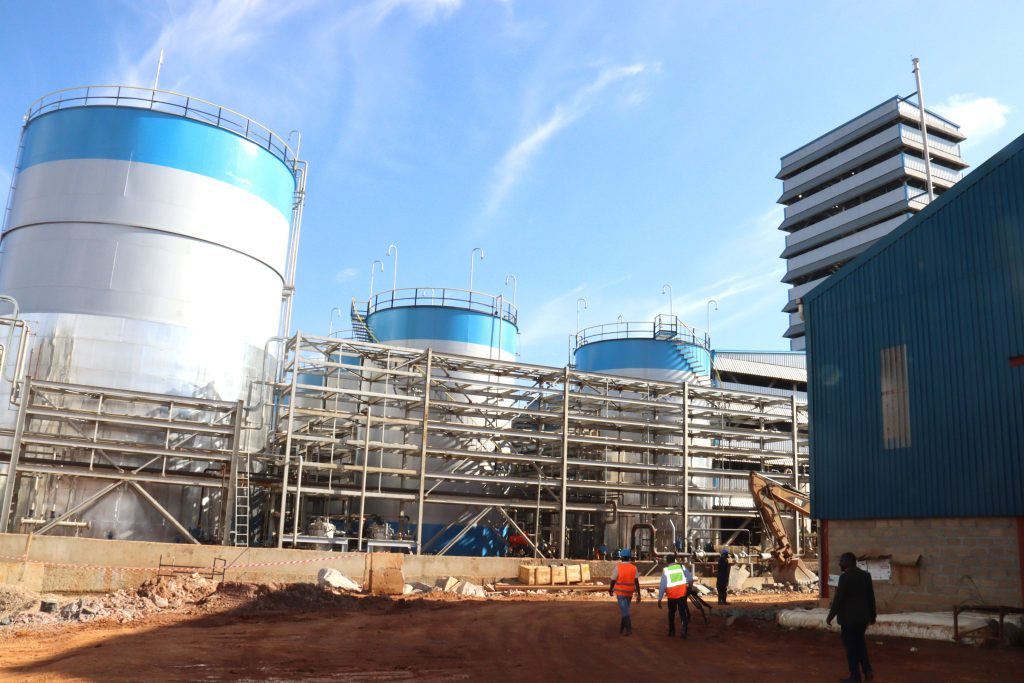
Performance of domestic investors
According to data from the UIA licensing system www.ebiz.go.ug licensed projects in the financial year 2023/24 were 26 more than the 400 licensed in the financial year 2022/23, representing a 6.5 percent increase in the number of licensed investment projects.
In the area of employment, the level of planned direct jobs registered a 55.9 percent increase to 67,911, up from 43,563 planned direct jobs registered in the financial year 2022/23. Local companies registered the highest level of planned employment, 41,920, and this accounted for 61.7 percent of all planned employment.
Out of the 426 licensed investment projects, 159 were by domestic investors, up from 129 licensed domestic projects in 2022/23. The import of this is that in terms of sources of planned investment projects, Ugandan investors contributed the highest number of licensed projects (159), which is 37.3 percent of all licensed projects in the financial year.
The improved performance was mainly on account of heightened domestic investment promotion activities, especially through the dedicated Domestic Investment Division, which conducts promotional activities across the country.
At the global level, the East African Community (EAC) registered the highest value of planned investments totaling 1.4 billion dollars, which accounted for 54 percent of all the planned investments in 2023/24. According to Investment Code 2019, East Africans are also categorized as domestic investors. Again here, the import is that Uganda, and the EAC, remain one of the country’s key sources of investment projects.
Transitioning traders to manufacturers

Consistent in the investment promotion gospel of UIA Director General, Robert Mukiza, the Domestic Investment Division not only serves domestic investors but also ensures that they graduate into successful investors capable of adding value to raw materials, creating jobs and contributing to the economic development of Uganda.
It is in that vein that UIA, in 2024, unveiled a groundbreaking initiative to encourage traders, starting with those in Kampala’s business hub popularly known as Kikuubo, to transition from trading in imported products to manufacturing them locally.
The “Transitioning Traders to Manufacturing” initiative” is hinged on the spirit of promoting import substitution by enabling traders whoo have been trading in imported products for many years to seize import substitution opportunities and tax and non-tax incentives that come with import-substitution manufacturing like zero tax rates, free industrial park land, and tax holidays, amongst others.
Already under the initiative, the “first cohort” of Kikuubo traders has embarked on the trading-to-manufacturing journey. Amazingly, it turns out that “money is not their problem” compared to most budding domestic investors. What they needed most was able and supportive hands, like UIA’s, and the right and relevant information and processes.
These transiting traders already have role models like Mariana Agencies (soap and edible oil), Ntake Refinery (soap, detergents, edible oil, packaging products, etc.), Luuka Plastics (packaging products), Bella (wines and beverages), Mak4 Cosmetics, Sanga (veterinary medicines), and East African Medical Vitals (medical gloves), amongst others, who have since established factories in Namanve Industrial Park.
Mobilisation of domestic investment

The Uganda Investment Authority launched the National Small and Medium Enterprises Portal (www.mybusiness.go.ug) to enhance business linkages, visibility, and competitiveness among micro, small, and medium enterprises (MSMEs) and domestic investors. To date, 2,786 MSMEs have been profiled, with 396 fully formalized, contributing 6,101 jobs and 134.96 billion shillings to Uganda’s gross domestic product (GDP).
In addition, UIA in partnership with the State House and Bank of Uganda, amongst others, embarked on regional investment promotion drives in Acholi, Madi, Greater Masaka, Rukungiri, Wakiso, and West Nile. One hundred (100) business ideas and 200 regional sector-based investment profiles have been developed for Acholi, West Nile, Greater Masaka, and Wakiso regions. These initiatives promote regional competitive advantages and support informed decision-making for domestic investors.
Domestic and foreign investments in Uganda
There is a misconception that UIA favours international investors over domestic ones. There is no truism in this perception.
The Investment Code Act of 2019 defines “domestic” as “a citizen of the East African Community Partner State. Under the Code, a “domestic investor” means: (a) a natural person, who is a citizen of an East African Community Partner State; (b) a company incorporated under the laws of an East African Community Partner State in which the majority of the shares are held by a person who is a citizen of an East African Community Partner State; or (c) a partnership in which the controlling interest is owned by a person who is a citizen of an East African Community Partner State, and holding an investment license issued under this Act.
The Government of Uganda, through UIA, considers incentives as central to boosting investments. The incentives span financial, fiscal and “other” (including regulatory) incentives. The incentives that are available to investors include both tax incentives and non-tax incentives, and they are not discriminatively given. In fact, domestic investors have a lower threshold for accessing the incentives.
The incentives are not giveaways but rather necessary and strategic interventions to catalyse, stimulate and grow investment in the country. The Government of Uganda uses incentives to stimulate both DDIs and FDIs.
In UIA-operated industrial parks, the number of domestic investors almost evenly matches the international ones. Yet, more domestic investors operate outside the industrial parks and UIA still facilitates them.
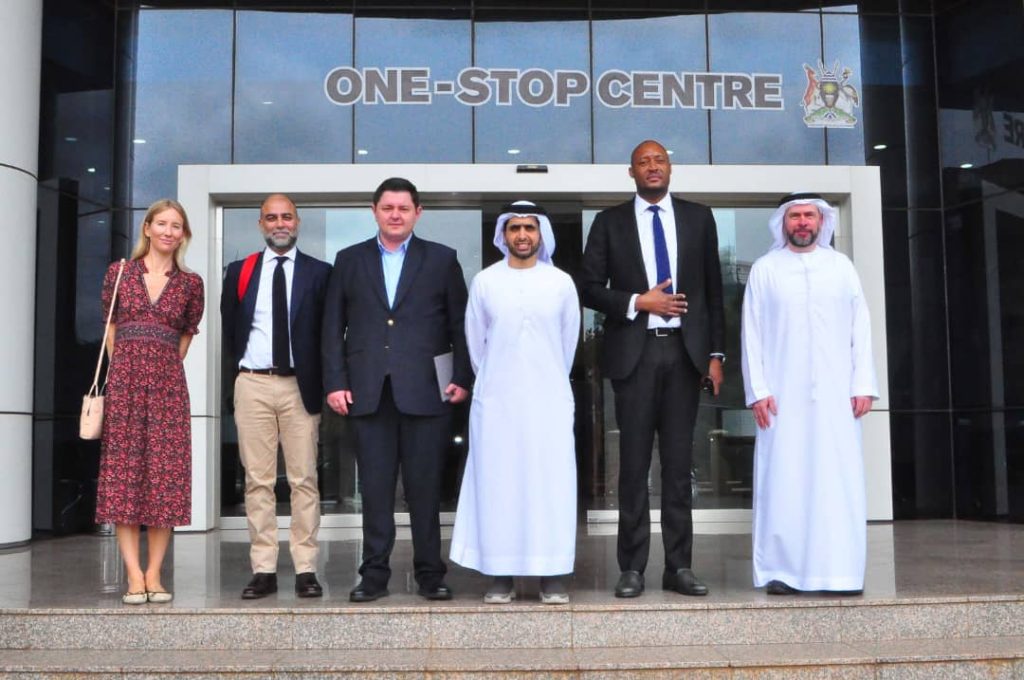
UIA’s other investment promotion initiatives
The UIA Strategic Plan 2020-2025 spells out three key strategic areas of focus: Increasing foreign direct investment (FDI) percentage contribution to GDP from 3.68 percent to five percent by 2025; facilitating the channeling of at least 10 percent of Ugandan diaspora remittances into investment by 2025; increasing the value of new domestic investment (DI) from 24.4 percent to 50 percent by 2025; reducing the cost of doing business environment to improve the country’s ranking and competitiveness; and promoting investment for economic transformation and employment creation through value-addition and technology transfer resulting into the creation of one million jobs (350,000 direct jobs and 650,000 indirect jobs).
To achieve these and other strategic objectives, UIA engages in robust promotion of Uganda as the best investment destination in Africa, as well as facilitation of investment projects. UIA conducts a string of activities all aimed at engaging the Ugandan Diaspora in order to boost remittances for investments, knowledge and technology transfer, etc. In the area of domestic investment, the dedicated Domestic Investment Directorate has a string of efforts all geared at boosting domestic investment. Overall, UIA is laser-focused on promoting industrialization and creating decent jobs, especially for young people.
Investment opportunities in Uganda
The Government has prioritized these sectors: Commercial agriculture, agro-processing, and agribusiness; Manufacturing; Tourism infrastructure and accommodation; Services (health, education, finance); Infrastructure development and housing; Mining and mineral beneficiation; and ICT.
However, it is important to note that there are vast and lucrative investment opportunities in literally every nook of Uganda.
Why invest in Uganda?
There are simply many reasons to invest in Uganda, and here are a few of them:
- Abundant natural resources
- Various and lucrative investment opportunities
- Investment catalyst in the world (Go Global Awards, Rhode Island, USA)
- Third most rewarding country to invest in in Africa (Africa Risk Reward Index 2023, Oxford Economics)
- Best investment destination in East Africa (Annual Investment Meeting Awards 2023, Abu Dhabi, UAE)
- Top 10 in industrial development in Africa (Africa Industrialisation Index 2022, African Development Bank)
- Security of person and person is guaranteed
- 100-percent ownership of investment projects is allowed for foreign companies
- Fastest growing economy in East Africa.
- Stable and consistent macroeconomic policies, a liberalized business environment
- Proximity as a logistics hub within the Great Lakes Region
- Strategic location and increasing regional trade
- Large domestic, regional, continental, and global markets (Uganda – 47 million people; East African Community – 300 million people; Common Market for Eastern and Southern Africa – 600 million people; African Continental Free Trade Area (AfCFTA) – 1.3 billion people in 55 countries with combined GDP of 3.4 trillion dollars; the European Union – Everything but Arms; and Trade agreements with China.
- Repatriation of profits is allowed
- Lowest labour cost in East Africa – average yearly wage for unskilled production operative (440 dollars)
- Highest adult literacy in East Africa (Knoema)
- Best tourist destination in the world 2023 (CNN)
- Number 1/regional leader in Capital Markets Growth in East Africa 2022, 2023 (Africa Financial Markets Index, Absa Bank)
- Number 1 happiest country in East Africa 2022 (Happier Index Score)
Steps in investing in Uganda
- Access to information on investment opportunities and processes like on www.ugandainvest.go.ug or other sources.
- Business or company incorporation with the Uganda Registration Services Bureau (URSB) https://ursb.go.ug to acquire a Certificate of Incorporation. Companies can be registered as local, public, or foreign. Company Registration services are available at the UIA Investor One-Stop Centre www.ebiz.go.ug
- Tax registration with the Uganda Revenue Authority (URA) https://ura.go.ug Tax Identification Number (TIN) applications (individual and non-individual) can be processed physically at any URA office including at the Investor One-Stop Center www.ebiz.go.ug
- Investment license: UIA issues the Investment License to both domestic and foreign companies. Acquiring an Investment License is a mandatory requirement for international investors as it is the instrument that legalises the investment in Uganda.
Companies need to meet the threshold, i.e., 50,000 dollars for domestic investors and 250,000 dollars for foreign investors. Please note that some sectors require regulatory licenses, e.g. mining, manufacture of drugs, etc., before applying for an investment license. The review process is on.
Persons intending to engage in trade do not require a license from UIA, but must prove they have access to operating capital of 100,000 dollars before trading licenses and the recommendations for work permits can be issued by local authorities.
The Investment license is free-of-charge and issued in less than 48 hours if the application meets the criteria. Applications are made online at the Investor One-Stop Centre Portal www.ebiz.go.ug with improved efficiencies, the turnaround time is 24 hours, usually.
- Secondary licenses: Companies operating in some sectors and jurisdictions like Energy, Infrastructure, Health, Education, Mining, and Financial Services, may require additional secondary licenses.
- Work permits: All foreign nationals intending to work in Uganda must ensure that they are in possession of the relevant work permit. The comprehensive list of requirements for the different categories or classes of work permits is listed on the Directorate of Citizenship and Immigration Control website https://immigration.go.ug
Once all these requirements are in check, as an investor, you are good to go!
Industrial growth and development
UIA is mandated to drive sustainable industrialization. A total of eight industrial and business parks (Namanve, Luzira, Bweyogerere, Jinja, Mbale, Soroti, Mbarara, and Kasese) have been operationalized. The operational industrial lands are Kiryandongo, Masindi, Lukali-Goli, Kaweeri, Kasangati, and Kashari.
As of the end of financial 2023/24, a total number of 625 companies were allocated land in the industrial and agricultural parks, up from 514 companies in the previous year. This indicates an increase of 111 factories allocated. Of the 625 companies that have been allocated land in the industrial parks, 294 are already operational, 194 are in the construction stage, and 139 are in the pre-start stages.
As of the end of the financial year 2023/24, a total of 122,168 direct and indirect jobs were created in the industrial parks, 19,460 of which were created in 2023/24 alone. In the financial year 2022/23, the number stood at 102,708 jobs.
By the end of the financial year (2023/24), the total capital investment in the industrial parks stood at an impressive 3.31 billion dollars (12.24 trillion shillings), up from 2.99 billion dollars (11.03 trillion shillings) the previous year.
In addition, UIA continues to support the growth and development of private industrial parks like Kapeeka, Tian Tang Mukono, Picfare Nyanza, MMP Buikwe, and Lugazi.
Infrastructure development (roads, water, electricity, broadband, waste, drainage, security, lighting, etc.) is being undertaken in Namanve, Kapeeka, and Mbale industrial parks.
Key sectors in the industrial parks are: manufacturing, agro-processing, assembling, beverages, commercial, energy, ICT, logistics, medicines, services, tourism and hospitality, warehousing and others.
Investors in the industrial parks are mainly from Uganda (43.4%), China (27.5%), India (14.9%), Kenya (2.1%), United Kingdom (1.4%), Lebanon (0.8%), United Arab Emirates (0.6%), Mauritius (0.5%), Nigeria (0.5%), Sweden (0.3%), Tanzania (0.2%), and Others (7.8%).
There have been a number of innovations in technology in the industrial parks like the making of a single HIV pill, GIS transformers, powder-free surgical gloves, electric vehicles, and smartphones, amongst others.
Regional distribution of investment projects
The Central Region continues to get the lion’s share of licensed investment projects, compared to other regions. In the year under review, the region attracted 353 licensed projects; that is 83 percent of all licensed projects.
Concerted efforts are in place to equitably distribute industrial development by establishing regional industrial parks. (See details below)
Development of Industrial Land Bank
To ease setting up of industries, especially through land acquisition and equitably distribute industrial park development and its benefits, UIA has acquired, thanks to local governments, strategic industrial lands in the following districts across Uganda: Nebbi (511 acres), Madi-Okollo (515 acres), Yumbe (1,244 acres), Pader (500 acres), Dokolo (200 acres), Oyam (154 acres), Lira (500 acres), Isingiro (5 square miles/3,200 acres), Rukungiri (203 acres), and Kisoro (620 acres).
Others are Kabarole (502 acres), Kyegegwa (10 square miles/6,400 acres), Nakasongola (640 acres), Kayunga (500 acres), Kamuli (636 acres), Soroti-Obina (600 acres), Busia (500 acres), and Kween (500 acres).
Ease of doing business in Uganda
To improve efficiency and shorten the turnaround time for licenses and permits, the One-Stop Centre for Investors (www.ebiz.go.ug) has been automated: an investment license is issued in 24 hours, up from 48 hours; company registration is down to four hours, up from five working days; tax identification number (TIN) issuance is four hours, up from 72 hours; and work permit issuance takes four days, up from two weeks.
Currently, 13 government and private sector agencies offering key investment and support services operate in the UIA One-Stop-Centre (Plot 1 Baskerville Avenue, Kololo, Kampala). They are UIA, Kampala Capital City Authority, Uganda Business Registration Services, Uganda Revenue Authority, Uganda National Bureau of Standards, National Water and Sewerage Corporation, Ministry of Lands Registry, National Environment Management Authority, Directorate of Citizenship and Immigration Control, Umeme (power utility), Federation of Ugandan Employers, and Giants Club (tourism promotion).
UIA’s contribution to Uganda’s economy
Two strategic targets of UIA are: a) increasing foreign direct investment (FDI) percentage contribution to GDP from 3.68 percent to five percent by 2025; and b) increasing the value of new domestic investment (DI) from 24.4 percent to 50 percent by 2025. These targets have been surpassed already. Latest investment data, for example, shows that FDI percentage contribution to GDP is now over five percent.
In 1991, UIA licensed seven investment projects with a planned investment value of 11.48 million dollars, with 473 planned jobs. Over the years, and consistently, UIA has been licensing hundreds of investment projects and created over one million direct jobs. As of June, 2022, UIA had licensed 8,615 investment projects valued at 33.634 billion dollars, with 1,085,678 planned direct jobs. (If for each direct job there are six indirect ones, this translates to over six million indirect jobs).
It goes without saying that most of the top taxpayers in Uganda are actually UIA-licensees, with quite a number operating in the various industrial parks.
Since 1991, UIA-licensed investment projects have created over one million direct jobs, with indirect ones being much more. To prove strides in employment creation, one needs to visit any of UIA-operated industrial parks as well as private ones, to see a sea of workers streaming in or out!
In terms of products (and services), Uganda has long removed and thrown away the “supermarket-of-the-world” tag.
More and more investors are now adding value to locally sourced raw materials – from agro products to iron ore.
Outlook
Uganda’s industrial growth and development are on an upward trajectory. Long gone are the days when Uganda was cheekily referred to as “the supermarket of Kenya or China”. A look at shelves in a supermarket or grocery near you shows how most of the products are made in Uganda. This is testament to deliberate steps the Government has taken over the years, with UIA playing a pivotal role.
UIA continues to firmly drive Uganda’s industrialization agenda, as reflected in the increasing number of industries, industrial parks, local industrial products and services, jobs, and much more. Just one example: Namanve Industrial Park – which is growing by leaps and bounds! Overall, 25 industrial parks are planned across Uganda. The private sector is also setting up industrial parks, thanks to the generous tax incentives for industrial park development.
***
David Rupiny is UIA’s acting Deputy Director for Communications and Public Relations
